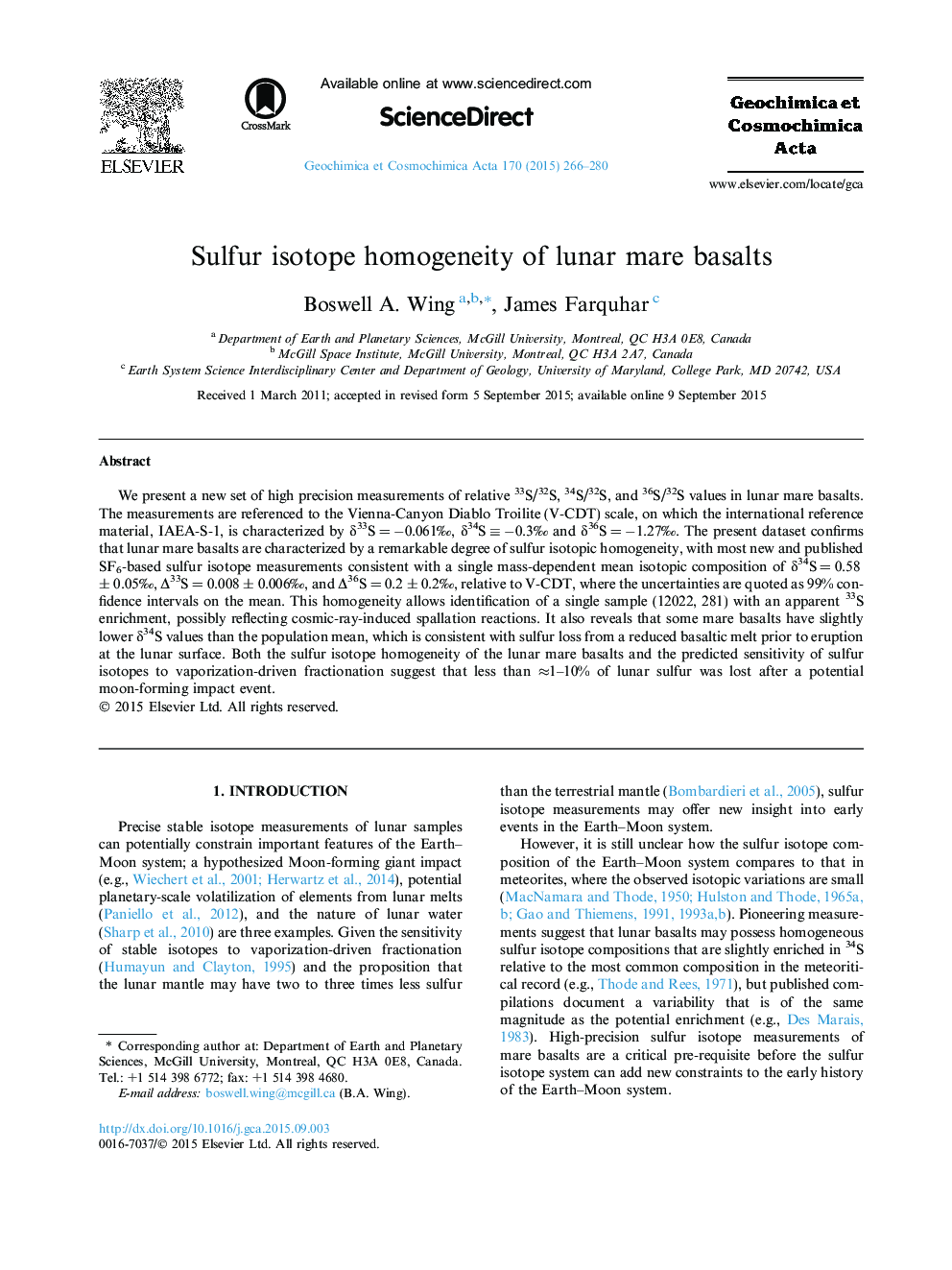| Article ID | Journal | Published Year | Pages | File Type |
|---|---|---|---|---|
| 4701837 | Geochimica et Cosmochimica Acta | 2015 | 15 Pages |
We present a new set of high precision measurements of relative 33S/32S, 34S/32S, and 36S/32S values in lunar mare basalts. The measurements are referenced to the Vienna-Canyon Diablo Troilite (V-CDT) scale, on which the international reference material, IAEA-S-1, is characterized by δ33S = −0.061‰, δ34S ≡ −0.3‰ and δ36S = −1.27‰. The present dataset confirms that lunar mare basalts are characterized by a remarkable degree of sulfur isotopic homogeneity, with most new and published SF6-based sulfur isotope measurements consistent with a single mass-dependent mean isotopic composition of δ34S = 0.58 ± 0.05‰, Δ33S = 0.008 ± 0.006‰, and Δ36S = 0.2 ± 0.2‰, relative to V-CDT, where the uncertainties are quoted as 99% confidence intervals on the mean. This homogeneity allows identification of a single sample (12022, 281) with an apparent 33S enrichment, possibly reflecting cosmic-ray-induced spallation reactions. It also reveals that some mare basalts have slightly lower δ34S values than the population mean, which is consistent with sulfur loss from a reduced basaltic melt prior to eruption at the lunar surface. Both the sulfur isotope homogeneity of the lunar mare basalts and the predicted sensitivity of sulfur isotopes to vaporization-driven fractionation suggest that less than ≈1–10% of lunar sulfur was lost after a potential moon-forming impact event.
